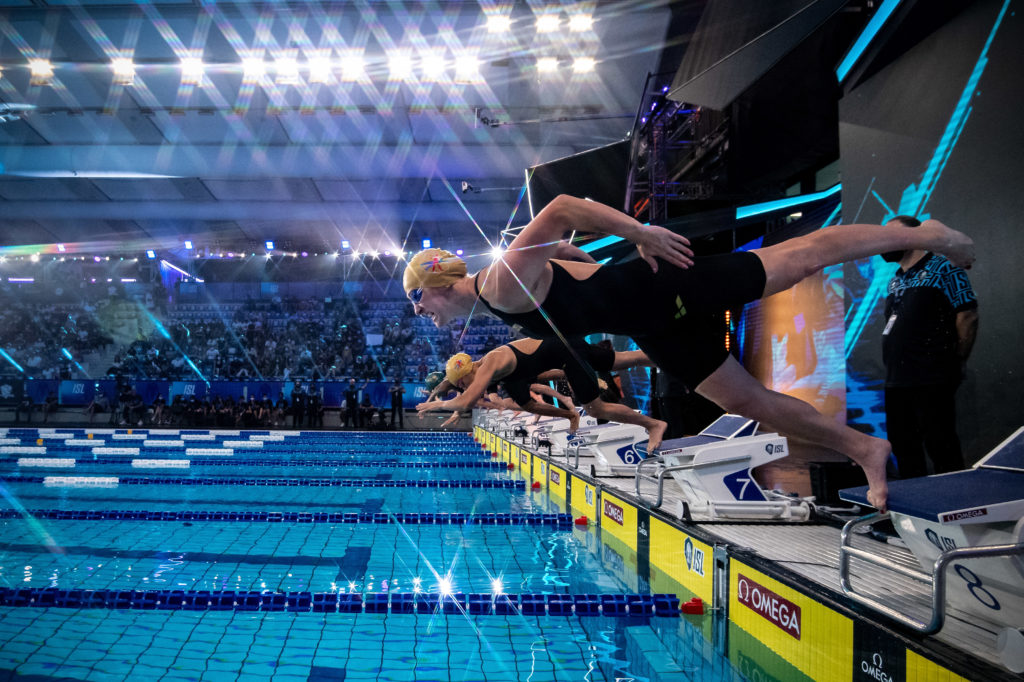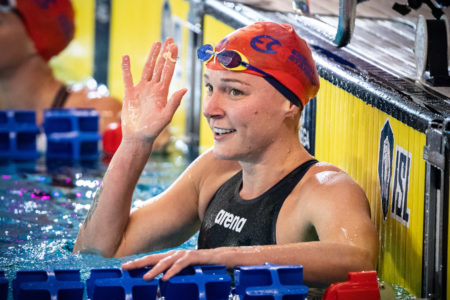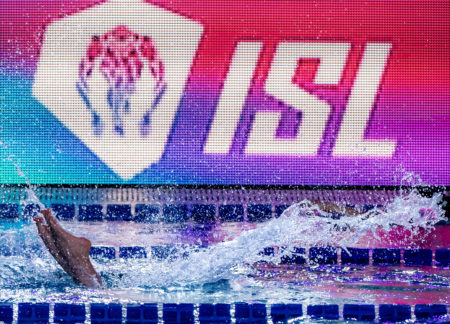What Happened to the International Swimming League?

What Happened to the International Swimming League?
Across the late-2010s, the world of swimming was dominated by discussions surrounding the idea of an International Swimming League (ISL). The Olympics consistently attract new fans to swimming, but the sport has struggled to keep fans’ interest with a calendar based around one-off events at the end of long training cycles — and the most important event only taking place every four years.
The ISL was intended to change that dynamic and bring swimming in line with more consistently popular sports. Teams drafted rosters that included some of the best swimmers from around the globe, with a mixed nationality setup similar to sports with typically far greater commercial appeal, such as baseball and basketball. The ISL included a regular season where teams tried to qualify for the playoffs. For the first time, swimmers were guaranteed a steady income, with appearance fees and bonuses for great performance in individual races or across the season.
This setup all seemed like it could impart a new lease of life into the sport. However, it did not pan out this way. The ISL has been on a permanent hiatus since the 2022 season was canceled, and as of July 2025, there are no signs of an imminent return. So what went wrong, and will we ever see a return?

Sarah Sjostrom — Photo Courtesy: Giorgio Scala / Deepbluemedia / Insidefoto
The Steps to Establishment
The ISL was initially extremely divisive, and faced major obstacles to formation. FINA (now World Aquatics) saw it as a direct threat, and threatened to ban any participating athletes from all FINA approved competition, such as the Olympics or the World Championships. FINA also sent letters to 209 national swimming federations, urging them to reject the ISL.
However, a group of athletes including colossal names such as Adam Peaty, Katinka Hosszu and Sarah Sjostrom refused to back down. Rather, they used this threat to underline and criticize FINA’s monopoly on competition.
By late 2018, the war of words had descended into the courtroom, and by 2019, FINA reluctantly allowed the event to go ahead. The first season kicked off in October 2019.
Were the Seasons Successful?
The media hype going in to the inaugural season was immense. Four international teams, four American teams and a glamorous final in Las Vegas brought something swimming had never seen before.
The main financial backer was Ukrainian businessman Konstantin Grigorishin, who announced in 2019 that the opening season would have a budget of $20 million, with $7 million in athlete prize money and $4 million focused on TV production. Broadcast deals were secured with Eurosport, CBS and BBC Sport, ensuring widespread visibility for fans. French team Energy Standard won the first league championship, with Sjostrom named the most valuable swimmer.
As with all sporting events, the pandemic brought significant challenges for the second edition in 2020. Rather than rotating arenas as was the case in 2019, the entire 2020 edition was held in a “bubble” in Budapest. This led to significant logistical challenges to prevent the spread of COVID-19 and also meant no fans could attend the events live, which was a dampener on revenue. However, a silver lining to this was following the general trend of increased television viewership due to everyone being forced to stay at home. American team Cali Condors won that year with Caeleb Dressel as the MVP.
Some COVID complications lingered into 2021, with only Naples and Eindhoven used as host cities. Financial strain began to seep in, with Grigorishin still providing the vast majority of backing for the league, which was not sustainable without this investment. Some sponsorships existed, as well as the aforementioned TV rights deals, but they struggled to even cover the simple operational costs of running the event. Such financial troubles meant that athlete payments were significantly delayed, and numerous swimmers reported missing payments months and years later.
What Stopped the ISL?
Following the Russian invasion of Ukraine in February 2022, Grigorishin could no longer move his fortune, contributing to the delayed payments. In March 2022, it was announced that the 2022 season of the ISL had been postponed to 2023, and this is the last we have heard of the event.

Photo Courtesy: Photo Giorgio Scala / Deepbluemedia / Insidefoto
What Went Wrong?
Heavy reliance on funding from an individual whose country was invaded is a somber turn of events that the league could not have predicted. However, this extreme reliance on the wealth of one man is not a sustainable model for a league to run, with the league heavily susceptible to failure based on external events. Furthermore, the financial issues date from 2021, meaning that geopolitical events are not solely the reason for the ISL’s failure.
Simply, the league did not generate enough hype or revenue to cover the significant costs. Cutting down on athlete salaries or bonus fees was not an option, as the ISL had marketed itself to the star athletes on the basis of paying fair fees and bonuses in comparison to World Aquatics. While the idea of mirroring other league formats was commendable, the league paying athletes rather than teams was an unsustainable business practice that is vastly different to other major sports leagues. This further left the athletes blindsided when the league’s central funding disappeared.
Furthermore, the initial disputes with World Aquatics meant that they were unwilling to help the ISL when funding began to dry up and geopolitics dealt a fatal blow. Had central integration been achieved, perhaps the ISL could have survived in a different format.
Is a Return in the Cards?
As of 2025, the league has been gathering dust for years and a return seems extremely unlikely. No plans are in place for it and it seems to have become forgotten in the worldwide swimming community. This is a massive shame for anyone excited by the innovative format and stakes outside of the traditional international meets. It seems a shame that it only ran in three iterations.
However, while the ISL is dormant, it introduced ideas that can help the sport evolve. Swimmers and fans alike enjoyed the idea of the fast-paced, athlete and entertainment-first league. While the ISL had its extensive share of issues, it shouldn’t be a death knell in terms of the attempt to innovate how swimming competitions are presented. Swimming should continue to strive for expanding the audience of our sport while giving the loyal, existing fans the best product possible.



